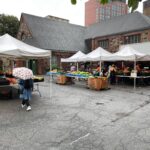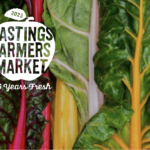Hudson Valley Wineries History
The Information Resource for New York's Hudson Valley
Grapes of the Hudson Valley
Where Wine Making in America Began: A Brief History of Wine Making in the Valley
By Rebecca Haynes
hudsonriver.com editor
Some of the country's oldest vineyards can be found in the Hudson Valley. The French Hugenots planted the first vines in New Paltz (now part of Ulster County) in 1677, 100 years before any vines were planted in what is now California.
Most of these early wines were made by families for their own consumption. But in 1827, Quaker Robert Underhill, who had established a self-sustaining community at Croton Point, planted grapevines brought from Europe with the intention of making wines to sell. The Croton Point community grew their own watermelons, apples, pears, chestnuts, castor beans and made bricks.
Although Underhill's attempt to cultivate these vines failed, that didn't stop him. Over the next two decades he cross-bred native and European vines and the results paid off - grapes with wonderful flavor growing on vines hardy enough to survive in this climate.
Weather has always been a difficult and unpredictable thorn in the side of Hudson Valley vintners. The river helps to moderate the climate and the area's location on the globe is parallel to northern Spain, southern France and central Italy. The Hudson Valley, however, is more humid, gets more precipitation and is generally cooler than these areas. Grape growers have discovered throughout the years that hybrid vines often withstand the climate better than European vinifera.
But back to the history. William Cornell established a vineyard in Ulster County in 1845. His endeavors greatly interested his brother-in-law, Andrew Caywood, who settled in Marlborough and worked on creating second generation hybrid vines. One of his products, the Dutchess grape, is still grown here today. Caywood's vineyards are now part of Benmarl Vineyards and the original vines planted by Caywood are still tended there today.
The first commercial winery in the Hudson Valley, Jacques Brothers Winery, was established in 1837 for the production of altar wines. Renamed Brotherhood in 1885, the Washingtonville winery is the nation's oldest continuously operated winery.
In 1850, the region's second winery was established at Croton Point. The company produced altar wines and also marketed its product in New York City as a medicinal tonic. Although there is no longer a winery there, the subterranean brick caves built by the founders to store and age their wines are still in existence. The area, in the village of Croton-on-Hudson, is now a Westchester County park.
The third winery, also named Brotherhood, operated in Amenia in Dutchess County from 1860-1867, when it moved out of the region.
The Hudson Valley Wine Company was opened in Highland (Ulster County) in 1904 by Alphonso Bolognese. The company made altar wines for local monasteries and is now the Regent Champagne Cellars.
High Tor Vineyards, which operated on a scenic mountain site in Rockland County back in 1949, was one of the east's most prominent wineries. Its owner, Everett Crosby, tried to get New York to change its laws and do away with the expensive $1,000-per-year licensing fee. He was unsuccessful and his winery went out of business.
In the 1970s, New York Governor Hugh Carey appointed John Dyson as state Commissioner of Agriculture. A wine enthusiast himself (he currently owns Millbrook Vineyards in Dutchess County), Dyson formed a task force that drew up the Farm Winery Bill. With testimony from Benmarl Vineyards owner Mark Miller and support from many other vintners and orgnanizations, the bill was passed in 1976, paving the way for rapid growth of the Hudson Valley wine industry. Annual fees were dropped to $125, making the endeavor easier to afford for the smaller wine-makers.
Today the Hudson River Region, given this name in 1982 by the Bureau of Alcohol, Tobacco and Firearms, has more than 20 operating wineries.
If you'd like to learn more about the wine industry in the valley I recommend a couple of books, both of which I used in researching this article. The first is "The Wines of New York" by Tom Dial, published in 1986 by North Country Books Inc., of Utica, N.Y. Even though it's 10 years old it still offers good, basic information on wines and the varieties of wines produced here. Some of the wineries listed are no longer in business, however, and there are new wineries that weren't around when the book was written.
An excellent book published in 1993 by The Countryman Press in Woodstock, Vt., is "The Wines and Wineries of the Hudson Valley" written by Alan R. Martell and Alton Long. This book, along with offering beautiful photographs by Laury A. Egan, gives descriptions of each Hudson Valley winery as well as an interesting history on the industry in the valley. It is published by The Countryman Press.
Photo Credit
"Gathering Grapes in the Vineyard at Marlboro-on-the-Hudson," from Frank Leslie's Illustrated Newspaper, New York, Oct. 18, 1879. Reprinted with permission from The Countryman Press.



